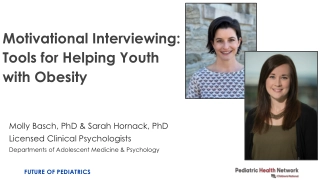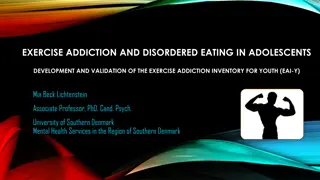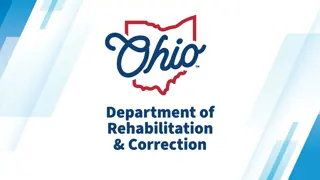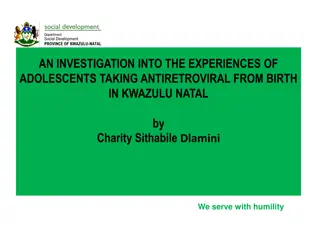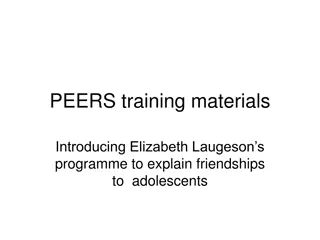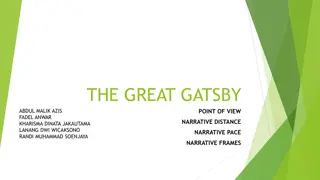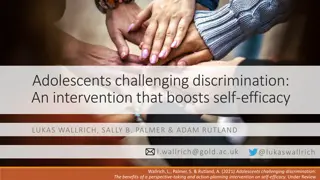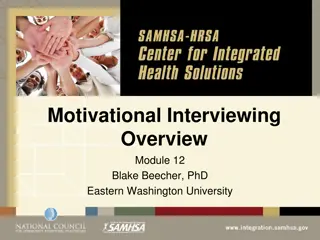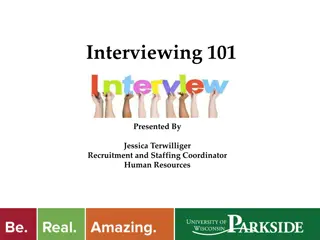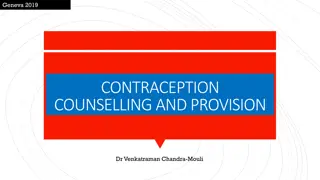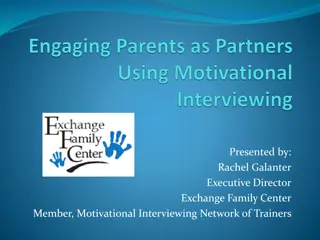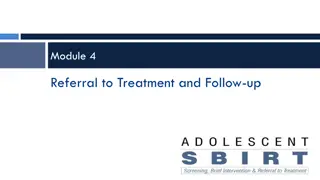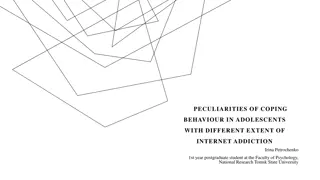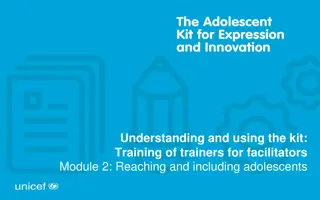
Strategies for Effective Qualitative Interview Techniques
Explore key strategies for conducting successful qualitative interviews, including recognizing biases, active listening, and promoting a comfortable environment. Learn what not to do during interviews and discover valuable techniques for engaging with adolescents and improving interview outcomes.
Download Presentation

Please find below an Image/Link to download the presentation.
The content on the website is provided AS IS for your information and personal use only. It may not be sold, licensed, or shared on other websites without obtaining consent from the author. If you encounter any issues during the download, it is possible that the publisher has removed the file from their server.
You are allowed to download the files provided on this website for personal or commercial use, subject to the condition that they are used lawfully. All files are the property of their respective owners.
The content on the website is provided AS IS for your information and personal use only. It may not be sold, licensed, or shared on other websites without obtaining consent from the author.
E N D
Presentation Transcript
Comfort with topicrecognize biases, discomforts Self Awareness (physical, emotional, cognitive, values) Characteristics of a Good Interviewer Patience Knowing the interview protocol ACTIVE LISTENING
What NOT to Do in a Qualitative Interview Don t ask leading questions Don t interrupt Tolerate (rather than disrupt) pauses Avoid yes/no questions Avoid putting words in her/his mouth or answering the question for her/him Don t solve problems during the interview Don t ask more than one question at a time at a time EXAMPLE: FROM BAD TO GOOD INTERVIEWING https://www.youtube.com/watch?v=FGH2tYuXf0s
Strategies to Encourage Neutral verbal expressions such as uh huh, interesting, and tell me more or I see Verbal expressions of empathy, such as, I can see why you say that was difficult for you Ways to convey trustworthiness and interest These are probably not the kind of questions that adults usually ask you but we are really trying to understand how young people s lives change at this age You are the expert here. Mirroring technique repeating what the participant said, such as, So you said that you were . . . or Useful? (if they said useful ) Culturally appropriate body language or gestures, such as nodding in acknowledgment or
Interviewing Adolescents Why should I trust you? I ve never thought about this before. What I think or know or experienced is bad or wrong and you will think ill of me. I might get in trouble. Variability stages of development: physical, psychological, cognitive, emotional
Jane Example EXERCISE: What did you think went well in the interview? What could have been better? What was problematic? What techniques did I use? Where did you notice follow-up questions?
Our Interview Protocol Since you started to grow up, does you mum treat you differently [then when you were a small child]? [If yes] How is it different? What about your dad? [only ask if has two parents] [Explain more if needed]: What are some things you can do now, that you could not when you were a child? At home (chores), after school, with friends ? What about things that you cannot do now, but you could before?
Practice, Practice, Practice EXERCISE: Take turns being the interviewer and the participant using our interview protocol Discuss what it was like to be the participant Discuss what it was like to be the interviewer Discuss what went well (both perspectives) Discuss what was difficult/not happy with/wish you had done differently and how you wish you had done it. Give each other feedback! Reflections: Memoing
What to Do When They won t answer They give brief answers They seem not to be comfortable They are shy or upset You are uncomfortable or worried You lose track of your place or skip questions If they go off road into other topics, to get overtalkers focused Interruptions/others walk in room etc.
Narrative Interviewing: Stories Storytelling is an essential characteristic of the human condition. What is a narrative? A story: beginning, middle and end How we live our lives and make our experiences coherent (without realizing it) Multiple stories about most experiences
Why Narrative Interviews? Storytelling is a means of transferring: Meaning (IMPLICIT) Tradition: (Explicit) Morals: (Implicit/Explicit) Culture: (Implicit)
Purposes of Narrative Interviews in the GEAS experiential data from young boy and girl adolescents Experiential data from parents Generating ideas/items for new bottom up gender scales
What is Narrative Interviewing? A specific form of semi-structured interview comprised of: An elicitation question Standard follow ups (to insure topic is covered) A menu of follow ups Asking participant for a response that describes their experience in which they are the I or narrator Enables us to collect data on implicit knowledge, opinions, norms Uses qualitative interview techniques from yesterday
A (somewhat) different kind of listening Ensuring participant is telling a story help them start: like a movie or tv show So where were you? You were going to Moving the story along: And then what happened? Keeping the story on track
Getting Narratives Engage participant in story telling Listening! (and listening under ) Join participant in telling a story (co-construction)\ Ask questions that fill in the middle Keeping track of the elements of the storY Eliciting both process and detail in follow ups HANDOUT: Common follow up questions for narrative interviewing
Follow up questions or probes: Direct for Clarification What do you mean when you say . . .? Can you tell me more? Can you please elaborate? I m not sure I understand X. . . .Would you explain that to me? What about that is X? What does X mean? or What do you call X?
Follow up Questions or Probes: Direct for Getting More Depth Why do you think . . .? How did this happen? How did you feel about . . .? What happened then? How did you handle X? Can you give me an example of X? How did X affect you? In what ways did ?
Janes Story EXERCISE: What did you think went well in the interview? What could have been better? What was problematic? What techniques did I use? Where did you notice follow-up questions?
Our Interview Protocol Do you remember a situation where you realized that you were no longer a child and that your parents were treating you differently than before? What happened exactly tell me the story of what happened, like it was a scene in a movie or on a tv show (?) (What other follow ups do we think will be most useful/necessary from the list)?
Narrative Interview Demonstration What did Deb do well? What did Deb do that wasn t helpful? What might Deb have done/said differently to facilitate the adolescent s story? What might be the same/different in your context?
Practice, Practice, Practice EXERCISE: Take turns being the interviewer and the participant using our narrative interview protocol (observer/notetaker) Discuss what it was like to be the participant Discuss what it was like to be the interviewer Discuss what went well (both perspectives) Discuss what was difficult/not happy with/wish you had done differently and how you wish you had done it. Give each other feedback! (Feedback to the group) Reflections: Memoing


